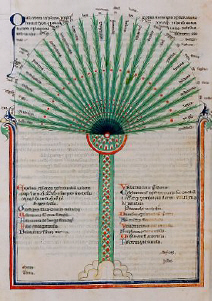Eneada-VI-3-14|Resumo em português
14. How are we to classify the straight line? Shall we deny that it is a magnitude?
The suggestion may be made that it is a qualified magnitude. May we not, then, consider straightness as a differentia of “line”? We at any rate draw on Quality for differentiae of Substance.
The straight line is, thus, a quantity plus a differentia; but it is not on that account a composite made up of straightness and line: if it be a composite, the composite possesses a differentiae of its own.
But (if the line is a quantity) why is not the product of three lines included in Quantity? The answer is that a triangle consists not merely of three lines but of three lines in a particular disposition, a quadrilateral of four lines in a particular disposition: even the straight line involves disposition as well as quantity.
Holding that the straight line is not mere quantity, we should naturally proceed to assert that the line as limited is not mere quantity, but for the fact that the limit of a line is a point, which is in the same category, Quantity. Similarly, the limited surface will be a quantity, since lines, which have a far better right than itself to this category, constitute its limits. With the introduction of the limited surface – rectangle, hexagon, polygon – into the category of Quantity, this category will be brought to include every figure whatsoever.
If however by classing the triangle and the rectangle as qualia we propose to bring figures under Quality, we are not thereby precluded from assigning the same object to more categories than one: in so far as it is a magnitude – a magnitude of such and such a size – it will belong to Quantity; in so far as it presents a particular shape, to Quality.
It may be urged that the triangle is essentially a particular shape. Then what prevents our ranking the sphere also as a quality?
To proceed on these lines would lead us to the conclusion that geometry is concerned not with magnitudes but with Quality. But this conclusion is untenable; geometry is the study of magnitudes. The differences of magnitudes do not eliminate the existence of magnitudes as such, any more than the differences of substances annihilate the substances themselves.
Moreover, every surface is limited; it is impossible for any surface to be infinite in extent.
Again, when I find Quality bound up with Substance, I regard it as substantial quality: I am not less, but far more, disposed to see in figures or shapes (qualitative) varieties of Quantity. Besides, if we are not to regard them as varieties of magnitude, to what genus are we to assign them?
Suppose, then, that we allow differences of magnitude; we commit ourselves to a specific classification of the magnitudes so differentiated.
